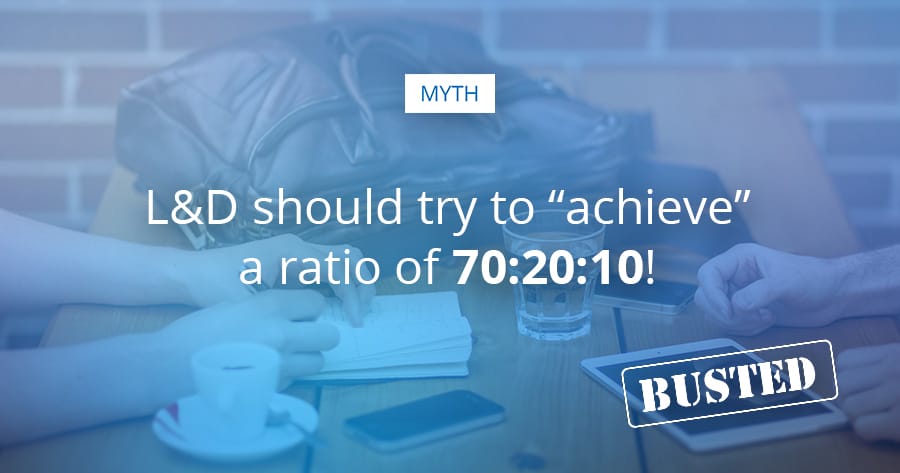
Learning and development – Should you strive for a “perfect” ratio of 70:20:10?
Should Learning and Development professionals strive for a firm 70:20:10 ratio, or are the numbers more flexible? What does the name “70:20:10” even mean for your team?
70:20:10 is not about trying to achieve a set ratio. Each performance problem to be solved will have its own optimum blend of experiential (‘70’), social (‘20’) and structured (‘10’) learning. Sometimes the best solutions may only use one activity area. Other times they may require some of each. L&D should use the 70:20:10 model as a guide to balance learning activity for optimum impact and help extend their support of learning into the workflow using the whole range of options offered in the 70:20:10 toolbox.
How 70:20:10 boosts formal training initiatives while supporting social and informal learning
At the heart of the 70:20:10 model is the notion that learning through experience as a part of daily work is likely to be the means through which more than two-thirds of the skills and knowledge for that job role are acquired. Those applying new models of learning are not just improving the formal and social learning opportunities but are also more active in facilitating experiential learning. Compared to those not applying new models they are more than four times as likely to agree with the following statements.
- 40% agree that staff in their organisation have access to job aids online or via mobile devices
- 23% agree that managers provide active support in application of learning in the workflow
- 22% say they have content curation strategies in place (to help staff find what they need when they need it)
Learning professionals can help people to become more self-reliant through ensuring that they have access to a range of systems and resources to support them at work. They need to avoid fostering a culture of dependency through becoming the route – or barrier – to reaching learning resources. Encouraging people to make time to reflect on what has worked well, and what has not, can help to make reflection a valuable part of the daily work habit.
Download the complete report to get a checklist for supporting experiential learning, and to learn more about the 5 features to look for in a performance support toolkit.
